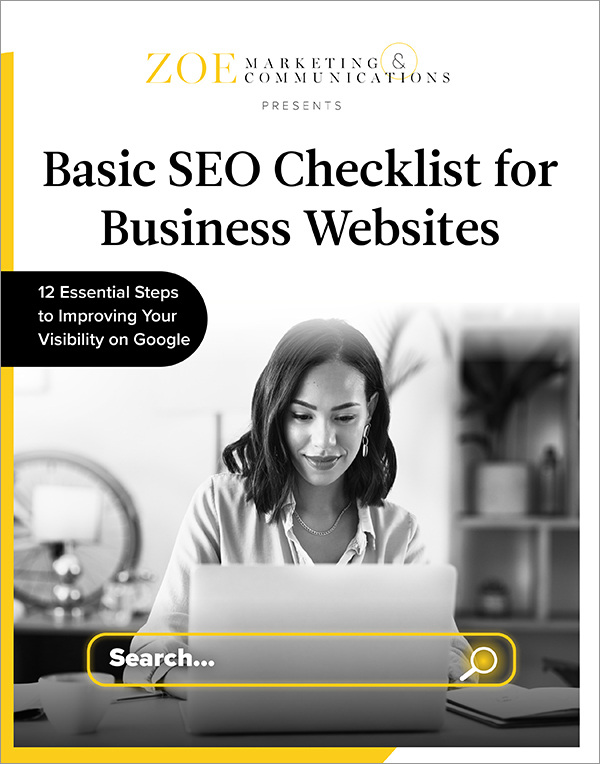
Download Your Basic SEO Checklist
Unlock the fundamentals of search engine optimization. This checklist provides step-by-step guidance to improve your site’s search ranking.
Topics:

You know that sinking feeling when your content is stuck on page 20 of Google? It’s frustrating — especially when you’ve worked hard to optimize your site.
One solution? Pillar pages. These in-depth webpages gather high-quality content in one place, creating a search engine superhighway to better rankings.
At Zoe Marketing & Communications, we have experience building SEO strategies. Here, you’ll learn how pillar pages increase visibility and engagement — and whether they’re right for you.
Unlock the fundamentals of search engine optimization. This checklist provides step-by-step guidance to improve your site’s search ranking.
A pillar page is a comprehensive webpage that covers a topic broadly while linking to more specific articles for deeper insights.

Sections and a logical layout keep users engaged.
Google’s job is to connect users to valuable information. Pillar pages help in key ways:
A well-structured pillar page encourages users to keep clicking and learning. This signals value to Google, increasing rankings.
Pillar pages naturally include more keywords and answer more user questions, helping them rank higher over time.
Search engines prioritize well-linked pages. The more internal and external links your pillar page earns, the more authoritative it becomes.
A pillar page is an umbrella for related content, but its format varies.
The Content Marketing Institute highlights three key common types:




Pillar pages can level up your SEO and engagement by structuring content the way Google loves — with deep linking, strategic keywords and an easy user experience.
Want to explore how pillar pages fit into your content strategy? Talk to us. Zoe Marketing & Communications can help build pillar pages that boost your rankings and drive traffic.
To learn more about your content strategy, explore:

Unlock the fundamentals of search engine optimization. This checklist provides step-by-step guidance to improve your site’s search ranking.
As Zoe Marketing & Communications’ content manager, Kim Kovelle brings over 20 years of writing and editing experience in metro Detroit. She has strong roots in community journalism and a knack for making complicated topics make more sense.
Topics:
